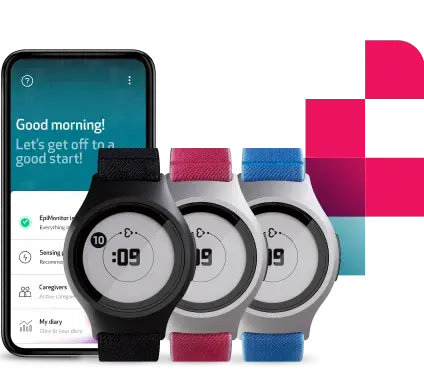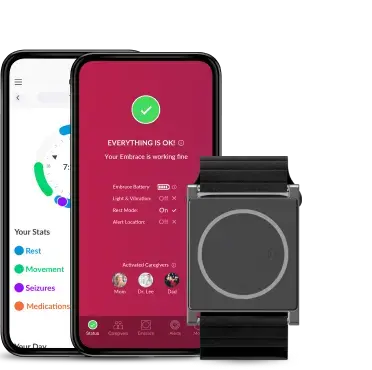Exploring play as a healing factor
Image Courtesy of 3XN
Many children find it anxiety-provoking and stressful to walk into a hospital to have a blood test or an IV insertion done.
A recent survey conducted at four university hospitals in Denmark, and enrolling 570 pediatric patients, revealed how pain management in hospitalized children is often inadequate.
At Copenhagen University Hospital, they have a policy about not restraining or forcing the child during an unpleasant procedure, unless it is an emergency. Restraint can be associated with physical and psychological trauma, and it should be avoided.
They have now designed and tested a new method that uses play and our E4 wristband to help children overcome difficult experiences in the hospital environment.
“Our hypothesis is that play can help promote emotional stability, social relations, collaborations, and cognitive skills. In a health context, play can help provide an understanding of the illness and the treatment, which has a positive effect on the patients’ compliance,” says Elisabeth Ginsberg, Head of Strategy and Innovation of the project organization responsible for the new Children’s Hospital Copenhagen in Denmark.
Image Courtesy of 3XN
My Thunder Buddy
The project Thunder Buddy aims to validate their hypothesis that play can reduce children's anxiety and stress during treatment.
Ginsberg’s team have first investigated what was triggering children’s stress at the hospital and what is done today to alleviate it. The multiple interviews with patients and staff led to three main findings:
- It’s important for the child to experience predictability, to know what is going to happen.
- Many children become curious about learning about the procedures, and they start mimicking the doctor’s and nurse’s practice by playing with medical tools and using their toys or dolls as patients.
- Externalizing the child’s negative feelings like anxiety, sadness, or anger, for instance by the hospital clowns, has a positive effect. Often the clowns exaggerate the feeling of the child to a comical degree to defuse the tension and provide a common outlet to the child’s negative emotions.
Many play initiatives conducted at the hospitals today are focused on distracting the child. The Thunder Buddy uses play to involve, rather than distract children during medical treatments, offering a more dignified and fun way for the child to experience the hospital and to learn more about the procedures they have to go through.
How does it work?
The solution consists of a physical teddy bear and an E4 wristband connected via a custom-designed tablet/smartphone application with a virtual teddy bear that the child can interact with.
The E4 wristband, equipped with medical-grade sensors, enables doctors and nurses to measure the physiological state of the child, including continuous electrodermal activity (EDA), pulse (from PPG), peripheral temperature (from infrared thermometer), and motion (from 3-axis acceleration). The E4 connects to the tablet via Bluetooth® enabling real-time data viewing.
The physiological data captured by the E4 is accessible via the SDK, allowing the use of custom-developed applications for the data collection. The team at Copenhagen University Hospital has developed a specific algorithm to monitor the child’s stress levels in real-time.
And so, what happens when the young patients meet their doctor?
The child receives a teddy bear, called Theo (or Thea), and an E4 wristband, presented as a teddy bear translator (a way for the child to communicate with the toy).
The E4 is turned on and starts the monitoring activity, which is streamed in real-time to the aforementioned custom-designed app on the child’s tablet or smartphone, featuring the virtual version of the teddy bear.
To get EDA minimum and maximum values as a benchmark for stress monitoring, the child is initially requested to stay perfectly still as the teddy bear is still asleep. They are then requested to wake him up by shaking the toy.
The virtual teddy bear in the app starts talking, telling the child that they are going to go through the same medical procedure and that they need to support each other.
The child is asked by the doctor or nurse to choose the remedies and the instruments that are going to be used to make them feel part of a fun game and to also help familiarize themselves with some of the medical tools.
In a continuous effort to make the procedure more predictable for the young patients, the clinician and the child will then perform the procedure on the teddy bear, and the child has the active role of taking care of him. This contributes to creating a trusting relationship between the staff and the child, who now knows what is going to happen.
During the entire course, the child keeps the E4 on. The stress measurements from the wristband are transmitted in real-time to the app, influencing the facial expressions of the virtual teddy bear. If the child is afraid, the teddy bear looks scared, reflecting the patient’s feelings and generating an empathetic response in the child that will start comforting their Theo, by hugging him or singing a song.
The preliminary tests have shown that this shift in focus and perspective for the child, acting as a caregiver, and helping the teddy bear through the treatment, increases emotional stability, with a calming effect on the child.
If however, the child is still too stressed before the procedure, they can have some time out and the teddy bear will invite them to play an interactive game on their tablet. The game teaches the child relaxation techniques such as slow and deep breathing by blowing virtual soap bubbles on the screen.
After the procedure is completed, the child is requested to put the teddy bear to sleep. The E4 wristband is switched off and the data collected are exported and uploaded into the E4 Connect, a secure cloud-based repository for the review and management of the data.
Hopes for the future
This pilot project is a collaboration between Copenhagen University Hospital and Odense University Hospital, and it’s supported by the foundation TrygFonden.
“With this project, we hope to produce a cultural shift in pediatric hospitals nationwide and around the world to promote alternative ways of reducing the stress of children during unpleasant medical procedures,” says Torsten Lauritsen, Head of the Department of Anesthesiology at the Juliane Marie Center at Rigshospitalet (Copenhagen University Hospital, Denmark).
Empatica is proud to have contributed to the project by providing the E4 wristbands and the developer tools to enable the CUH team to obtain accurate and precise physiological data and build their custom app for the monitoring of stress in real-time.
The project group behind the Thunder Buddy hopes, in the long term, that the physiological data collected through the E4 wristband will provide the basis for research in the area of children and stress reduction.
They are confident that the E4 wristband could potentially also be used to measure the effects of other tools and interventions designed to reduce stress, thereby contributing to the creation of a more evidence-based practice around the educational tools used in the hospital.
You can learn more about the E4 wristband by visiting our website or getting in touch with us at research@empatica.com.
We are also excited to announce our newest medical-grade wearable, EmbracePlus, that will be available in 2020!
Take advantage of our EmbracePlus upgrade bundle by purchasing an E4 wristband today. Talk to our team for more details.



